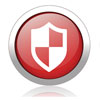
Energy Distribution
Devices meet challenging ECS requirements for an energy company’s sprawling campus
- By David George
- Aug 01, 2014
 When officials at the United Illuminating Co., a regional energy
distribution company in New Haven, Conn., planned
the recent completion of their 56-acre corporate headquarters,
their “must-have” list included a campus-wide Emergency
Communications System (ECS).
When officials at the United Illuminating Co., a regional energy
distribution company in New Haven, Conn., planned
the recent completion of their 56-acre corporate headquarters,
their “must-have” list included a campus-wide Emergency
Communications System (ECS).
FIRETECH Engineered Systems, West Haven, Conn., served as the project
fire and life safety engineered system provider for this campus development. The
$120 million project consisted of 376,419 square feet of LEED Silver-certified
office, warehouse and operations space, including a 159,000-square-foot Operations
Center and a 131,000-square-foot Office Complex, as well as a two-story
parking structure.
“When you have a campus project of this size, it’s a matter of coordination,”
said Adam Querker, vice president of engineering for FIRETECH. “The timing
of which building is brought up first and so on directly relates to what parts of our
network or command control needs to be running in order to make that happen.”
Special Request Poses a Challenge
The fire and life safety system involved a complex, multi-building fire system with
an integrated voice and data network in between buildings with cooperative control
between all buildings. In addition, United Illuminating had a special request:
to have multiple voice command control centers throughout the campus for notifying
certain spaces of the campus at any given time. Specifically, company officials
wanted paging capability within any building or across all buildings for live,
ECS messaging, which would be necessary in case of an evacuation.
However, this posed a challenge of how to allow an operator to have priority
at one of those four command control areas, while giving the command center in
the guard shack equal or higher-paging priority. Keeping it all networked together,
FIRETECH designed the network to allow for priority-level paging.
“In turn, the audio input on the digital device at each location has an inherent
priority assigned to it,” Querker said. “That provides priority input, telling the
system which one goes first, second and so on.
“The system is incredibly stable. That is, if any one node leaves the network,
that node will assume a local level of control and will react to any alarm within
its normally covered area. An extra benefit of the command and control of this
system’s design is that it can easily be upgraded later to handle mass notification.”
Integrating ECS
When multiple systems are integrated, it is not always clear who’s in charge; there
can be multiple authorities having jurisdiction (AHJ), as well as other facility, fire
and security staff, or even the building owner. In United Illuminating’s case, there
is a clear separation between the fire and audio systems, and both authorities will
have to work in unison to grant system compliance. In other instances, one system
will defer to the other.
The same can be said of which system is in charge. This entails having a systems
command structure that can tie into the fire alarm control panel and act as the
main control point of the integrated systems.
ECS systems are designed to integrate fire, security and communications
systems for immediate, responsive and effective notification to the appropriate
audiences. They also need to centralize data from other building systems. Next
to security systems, ECSs are most often integrated with fire alarm systems, followed
by CO systems. The key to successful integration is capturing the unique
nuances of each application. Rising to the challenge, FIRETECH integrated all aspects for a balanced system.
Codes for Integrated Systems
With integrated systems, the code requires fire alarm
signals to be distinctive, clearly recognizable and able
to indicate in descending order of priority. Signals
associated with life safety take priority, followed by
signals for property protection, then all trouble signals
for life and/or property protection, and, finally,
all other signals.
Signal priorities may vary, depending on the emergency
response plan and requirements of the AHJ.
Even the NFPA code now allows ECS and mass
notification messages to take priority over the fire
alarm audible notification message or signal under
prescribed conditions designated in the risk analysis
and emergency response plan. This allows the ECS
to prioritize emergency signals based on the risk to
building occupants.
The code also requires the desired operation to be
specified, in particular, as to what should occur immediately
after the ECS message has completed.
A Job Well Done
In all, FIRETECH installed multiple NOTIFIER
control panels. Each building has its own control
panel with a priority control point in the guard shack,
and more than 600 System Sensor SpectrAlert Advance
speaker strobes were installed throughout the
campus.
Intelligibility is a problem that goes hand-in-hand
with messaging. Many voice communications systems
are still designed around the principles of audibility
rather than intelligibility. In short, louder does not
equal more easily understood.
“With as many speakers as there were, we were
able to keep the wattage of the speakers low instead
of just blasting the sound,” Querker said. “It worked
out rather well considering the environmental variables,
the carpets used, type of ceilings and high bay
garages with vehicles. Everything was crystal clear.”
Having minimal issues with the devices was an
added bonus.
“We’ve been experiencing a lot less problems in
the field with the newer System Sensor devices,” said
Querker, “because of their physical design along with
the ease of wiring the backplate, allowing a clean and
stable installation of the device and
its associated wiring. This product
has been a tremendous improvement
from previous designs.”
This article originally appeared in the August 2014 issue of Security Today.